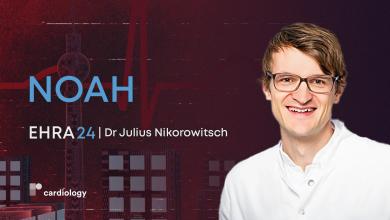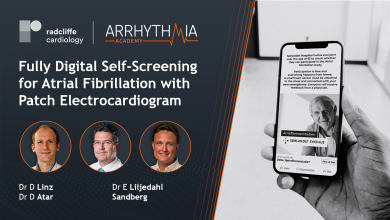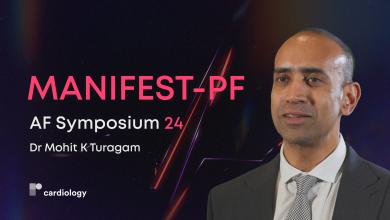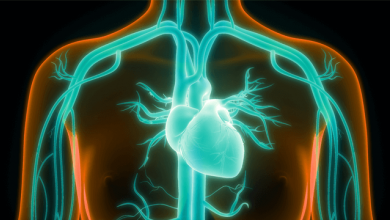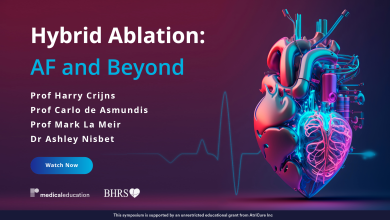Search results
Author(s):
Julius Nikorowitsch
Added:
3 days ago
EHRA 24 - We are joined onsite by Dr Julius Nikorowitsch (University Heart and Vascular Centre Hamburg (UHZ), DE) to outline the impact of age, sex, cardiovascular comorbidities, and kidney function on outcomes with oral anticoagulation therapy in patients with device-detected atrial fibrillation in a substudy of the NOAH-AFNET 6 trial (NCT02618577).The substudy consisted of 2534 patients from…
View more
Harry Crijns
Research Area(s) / Expertise:
Author
Author(s):
Edvard Liljedahl Sandberg
,
Dominik Linz
,
Dan Atar
Added:
11 months ago
Dr Dominik Linz (Maastricht University Medical Center+, NL) is joined by Dr Dan Atar (University of Oslo, NO) and Dr Edvard Sandberg (Sorlandet Hospital, NO) to discuss their February 2023 article published in EP Europace, 'Fully digital self-screening for atrial fibrillation with patch electrocardiogram'.
Dr Sandberg presents a summary of the findings of this trial, outlining the current global…
View more
Author(s):
Mohit K Turagam
Added:
2 months ago
AF Symposium 2024 – In this interview, investigator Dr Mohit K Turagam (Icahn School of Medicine at Mount Sinai, US) discusses the findings of a sub-study of the MANIFEST-PF registry.The study investigated the impact of left atrial posterior wall ablation during pulsed field ablation (PFA) for persistent atrial fibrillation.Questions1. What is the MANIFEST-PF registry?2. What is the importance of…
View more
Author(s):
Demosthenes G Katritsis
,
Bernard J Gersh
,
A John Camm
Added:
3 years ago
Thrombotic material in atrial fibrillation(AF) usually develops in the left atrial appendage as a result of decreased flow and stasis, possible endothelial dysfunction and a hypercoagulable state as indicated by increased fibrinogen, D-dimer, thromboglobulin and platelet factor 4 levels.1 In the Framingham Heart Study, the percentage of strokes attributable to AF increases steeply from 1.5 % in…
View more
Author(s):
Tze-Fan Chao
,
Chern-En Chiang
,
Shih-Ann Chen
Added:
3 years ago
Burden of Atrial Fibrillation
Atrial fibrillation (AF) is the most common sustained arrhythmia in clinical practice, accounting for approximately one-third of hospitalisations for cardiac rhythm disturbances.1 Between 1980 and 2000, the age-adjusted incidence of AF significantly increased from 3.04 to 3.68 per 1,000 person-years in the US.2 The prevalence of AF was lower among African Americans…
View more
Hybrid Ablation – AF and Beyond
Video Series
AI in AF
Author(s):
David M Harmon
,
Ojasav Sehrawat
,
Maren Maanja
,
et al
Added:
1 year ago
Article
Author(s):
Manesh R Patel
Added:
2 years ago
In this short interview from our coverage of ACC.22 late-breaking trials, Dr Manesh Patel (Duke Heart Center, US) discusses the multicentre, randomised, double-blind PACIFIC-AF trial (Bayer)(NCT04218266).
The trial sought to determine the efficacy of the oral FXIa inhibitor asundexian and evaluate the safety of the drug, compared to the non-vitamin K oral anticoagulant (NOAC) apixaban, in…
View more








